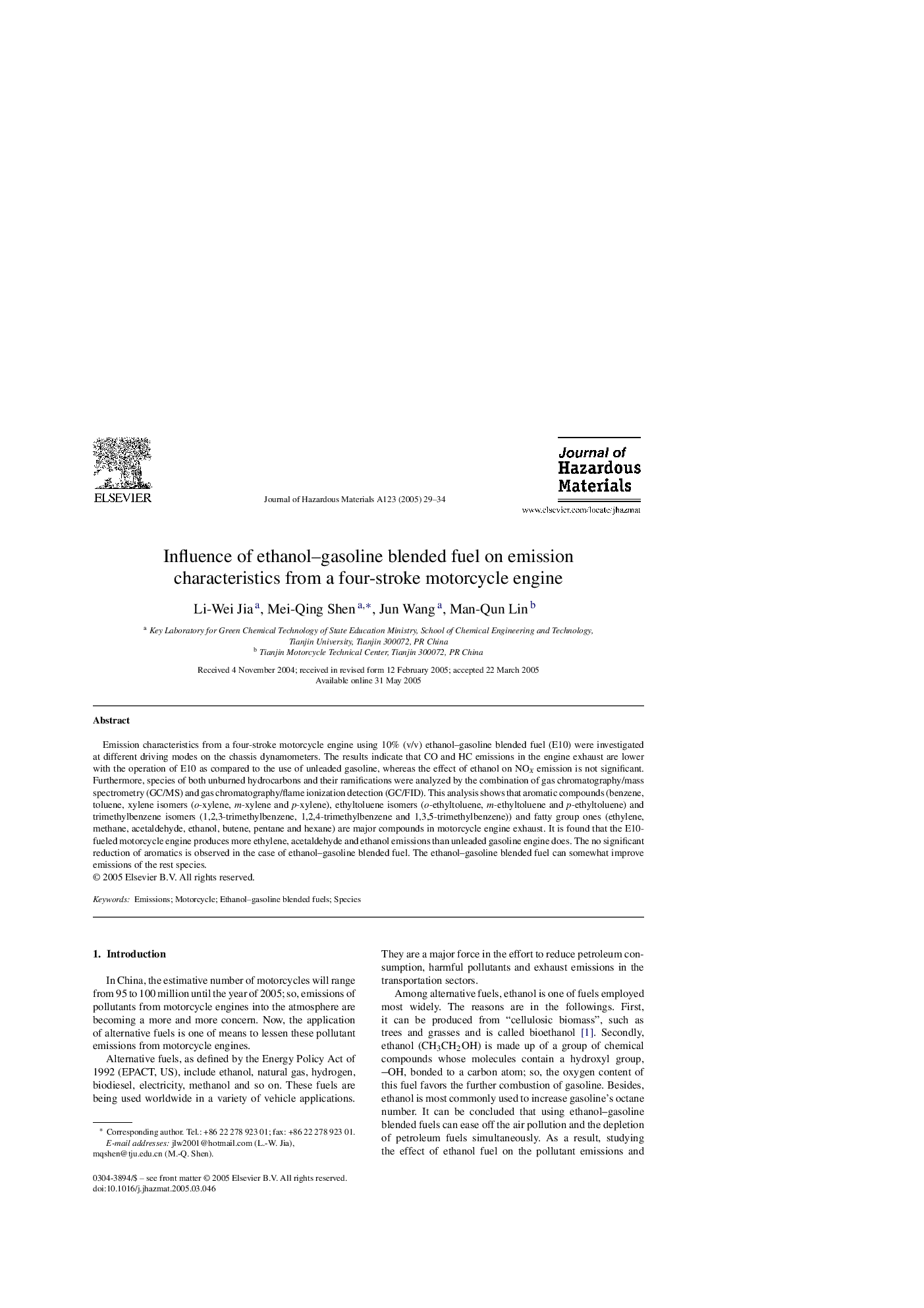| Article ID | Journal | Published Year | Pages | File Type |
|---|---|---|---|---|
| 9674196 | Journal of Hazardous Materials | 2005 | 6 Pages |
Abstract
Emission characteristics from a four-stroke motorcycle engine using 10% (v/v) ethanol-gasoline blended fuel (E10) were investigated at different driving modes on the chassis dynamometers. The results indicate that CO and HC emissions in the engine exhaust are lower with the operation of E10 as compared to the use of unleaded gasoline, whereas the effect of ethanol on NOX emission is not significant. Furthermore, species of both unburned hydrocarbons and their ramifications were analyzed by the combination of gas chromatography/mass spectrometry (GC/MS) and gas chromatography/flame ionization detection (GC/FID). This analysis shows that aromatic compounds (benzene, toluene, xylene isomers (o-xylene, m-xylene and p-xylene), ethyltoluene isomers (o-ethyltoluene, m-ethyltoluene and p-ethyltoluene) and trimethylbenzene isomers (1,2,3-trimethylbenzene, 1,2,4-trimethylbenzene and 1,3,5-trimethylbenzene)) and fatty group ones (ethylene, methane, acetaldehyde, ethanol, butene, pentane and hexane) are major compounds in motorcycle engine exhaust. It is found that the E10-fueled motorcycle engine produces more ethylene, acetaldehyde and ethanol emissions than unleaded gasoline engine does. The no significant reduction of aromatics is observed in the case of ethanol-gasoline blended fuel. The ethanol-gasoline blended fuel can somewhat improve emissions of the rest species.
Keywords
Related Topics
Physical Sciences and Engineering
Chemical Engineering
Chemical Health and Safety
Authors
Li-Wei Jia, Mei-Qing Shen, Jun Wang, Man-Qun Lin,
